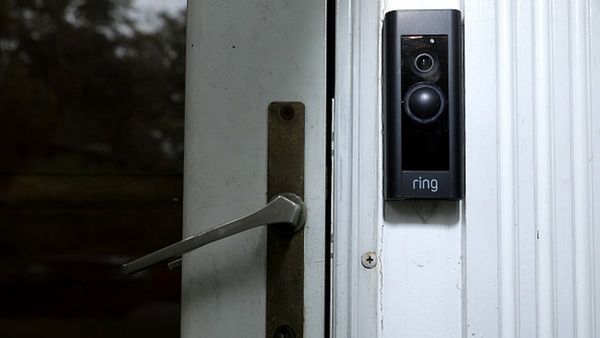
There was a joke doing the rounds when I was first visiting the Outer Hebrides more than three decades ago. On the flight to Stornoway, halfway across the Minch, the pilot makes an announcement: “We will shortly be arriving on the Isle of Lewis. Don’t forget to turn your watches back two … hundred years.”
And there was, indeed, as you arrived on the islands for the first time, a sense of stepping back in time – to a place and a culture that had changed little in perhaps centuries.
My first impression of the Outer Hebrides is imprinted indelibly on my memory. Arriving by ferry at Tarbert, in Harris, on a bleak midwinter day, I drove north through a stark and treeless landscape to a tiny village at the extreme northern tip of the Isle of Lewis.
There, small fishing vessels nudged each other playfully and strained at ropes in the tiny harbour at Port of Ness. Beyond the boathouse, an arc of deserted golden sand stretched away to an outcrop of black gneiss, like fingers reaching into the Minch.
The year was 1991, and I was there to research and develop a television soap opera in the Gaelic language. We began filming Machair a year later, and I spent much of the next five years producing that subtitled drama for Scottish Television.
That first, somewhat unpromising, encounter was to develop into a passionate love affair. I have been back many times since, though there was a period in the dark days of the Covid pandemic that made me think I might never return. Then, in 2023, I went back to the islands to research my new book, The Black Loch, and found that enforced absence had somehow provided me with a new perspective. A familiar phrase from my adopted country, France, ran through my mind – plus ça change, plus c’est la même chose. Which translates roughly as the more things change, the more they stay the same.
In a superficial sense very little has changed in the past 30-odd years. The same timeless Atlantic waves crash upon the black cliffs and golden sands of the west coast. The same wind scours the same bogs scarred by generations of peat digging. The east coast port of Stornoway has altered little on the surface. Lines of Sunday worshippers clutching Bibles lean into the wind, one hand on their hats as coats fly out in their wake.
But beyond first glance, this is a society that has undergone a transformation, and faces a future that could very possibly blight its once unspoiled landscape.
Culturally, the change has been seismic. On that first trip to Lewis, I recall hungrily wandering the streets of Stornoway looking for lunch on the sabbath. Nothing was open. No restaurants, no pubs. It was impossible to buy petrol for my car, and I feared I would not make it back to my rental cottage.
Public toilets were locked, swings in the playground were chained and padlocked. And although it was a breezy day, clothes lines all over the island fibrillated emptily in the wind. It was forbidden to hang out washing on a Sunday. Neither could you buy a Sunday paper – they did not arrive until Monday morning as there were no flights or ferries.
Urban myth has it that the only cinema on Lewis was forced to close its doors after showing a film of which the church disapproved. I don’t know if that really happened, but the screening of Fanny Hill in 1967 certainly caused an outcry. And it was claimed that the Reverend William Maclean of the Free Presbyterian Church in Ness cast a curse on the cinema manager after Jesus Christ Superstar was shown in 1976. But then, the islands have always spawned tall stories.
However, island life then was indeed controlled by the Protestant church – several denominations of which agreed on only one thing: the Lewis Sabbath was inviolable. The faithful had even been known to prostrate themselves on harbour ramps to prevent attempts by the ferry company to start a Sunday service.
Now there are many bars and restaurants open on a Sunday, although mostly in Stornoway – the Boatshed in the Royal hotel and the adjoining HS-1 Cafe Bar, the Harbour View restaurant above the Crown Inn and the Storehouse cafe/whisky bar inside Lews Castle.
Flights to the mainland arrive and depart. Ferries sail into the major harbours (when they have not broken down or been taken out of service). The public toilets are open, and swings twist freely in the wind.
While there is still a reluctance in rural areas to hang out laundry on a Sunday, it is not uncommon to see washing lines in Stornoway flapping in the wind.
I feel, in part, responsible for this. When Machair began airing in the 1990s, the Gaelic Television Committee (CTG), which financed the production, claimed it had brought an upsurge of tourism. And with the arrival of the tourists came commercial pressure for restaurants and bars to open on a Sunday. That upsurge turned into a tsunami after the success of my Lewis Trilogy – The Blackhouse, The Lewis Man, and The Chessmen – a little over a decade ago. There are now literary trails and guides, and location tours that take visitors to sites mentioned in the books.
A new deep water port has been built opposite the harbour in Stornoway, close to the former oil platform construction yard at Arnish (which now specialises in wind turbines). It can accommodate huge commercial cruise ships, up to 360 metres long, debouching up to 5,000 visitors at a time to flood the streets of Stornoway, and the few remaining single-track roads on the island. This has aroused mixed feelings locally. Some concerns have been expressed about whether the island infrastructure can cope with this, while Scotland’s first minister, John Swinney, has described it as “a gamechanger for the islands”.
The rise in tourism over the past 30 years has seen a corresponding fall in Stornoway’s once-vital fishing industry. Although the two are not really connected. When we were filming in the 90s, the inner harbour at Stornoway bristled with fishing vessels tied up at the weekend, towering above the town at high tide. Now only a handful of fishing boats remain, and it is recreational vessels that are berthed along the new pontoons attached to the harbour walls.
Another cultural change concerns cuisine. Back in our filming days, though vast quantities of fish and seafood were harvested from the Minch, very little of it made its way on to the plates of locals or the menus of island restaurants. Most of it went south, and to such distant places as Hong Kong and south-east Asia. But what a transformation the past few years have seen. Restaurants and roadside vans have appeared throughout the islands, selling freshly cooked seafood to hungry visitors. One classic example is Uig Sands, one of the most remote restaurants on the islands. Its focus is on fresh and local produce, with an emphasis on fish and shellfish. Lochmaddy Bay Prawns on North Uist serves creel-caught langoustines and prawns in a variety of creative dishes. On South Uist, Croft and Cuan also offers locally caught seafood. Food trucks and honesty shops have sprung up all over, many of them serving traditional local fare.
Yet, in spite of all these changes, as I drive west now from Stornoway across the Barvas moor, the horizon remains unchanged. The stoic, wind-battered villages along the coast road, north and south, appear just as they did when our caravan of trucks trekked through stormy weather to filming locations. I could almost believe that I had never been away. All the unspoiled beauty of these islands remains, for the most part, unsullied by the march of time.
A rise in the road reveals the lazy turning of half a dozen wind turbines towering over the peat bog. And there are plans, as yet to receive final approval, to install 66 wind turbines three miles off the west coast of the island. Standing up to 380 metres tall, they will have a dramatic visual impact on a landscape unchanged in millennia.
The demands of climate change have transformed the way islanders heat their homes. The distinctive smell of peat smoke, which once laced every breath of winter wind, is all but gone. Carbon-rich peat banks lie deserted. Clean energy is the watchword. But many locals think the desecration of their almost primeval landscape is a price too high to pay. In fact, a dedicated Facebook page, Hebridean (SEA) Without Turbines, provides a rallying point for those who object to the plans, and now has 1,500 members.
So much change. And yet, to walk the streets of Stornoway, or drive around the island, everything seems just as it was three decades ago. The landscape remains the same. The deserted beaches are, for the most part, still deserted. The wind scours the land and very little grows above waist height. Taking the road from Harris up the east coast, I could almost believe that a time machine had returned me to that bitter cold February in 1991 when I first drove my car off the ferry at Tarbert and headed north to Ness and my appointment with destiny.
• The Black Loch by Peter May is published by Riverrun (£22). To support the Guardian and the Observer buy a copy at guardianbookshop.com. Delivery charges may apply.







